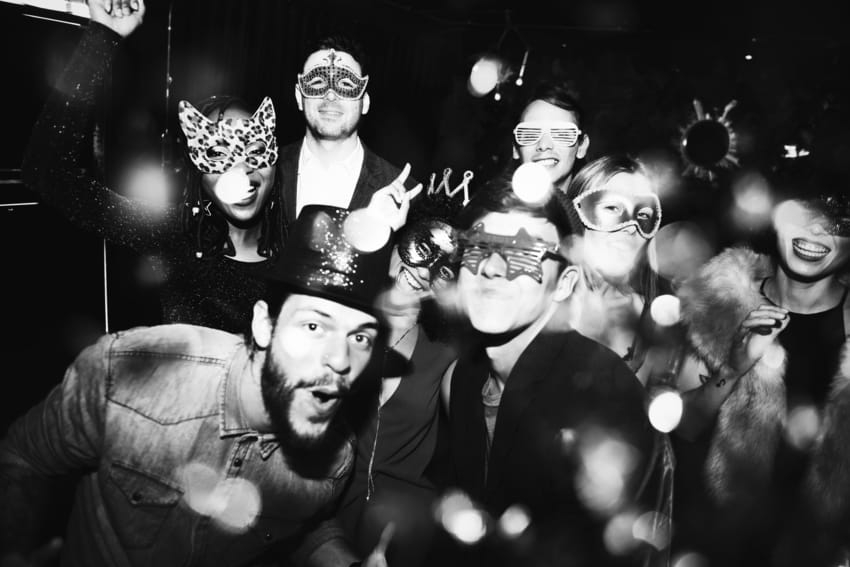Graded Reader - Intermediate
Hogmanay? What does this strange word mean? It is, in fact, the Scots word for the last day of the year and signifies the Scottish way of celebrating the New Year on the Gregorian calendar. It is usually followed by further festivities on the morning of New Year's Day (1st January) and sometimes on 2nd January as well - this is a bank holiday in Scotland.
The true origins of Hogmanay are unknown but could be related to ancient Norse or Gaelic traditions. Although customs vary throughout Scotland, it is, for all a merry time of giving gifts and visiting the homes of friends and neighbours. Special attention always goes to the 'first-foot' - the first guest to cross the threshold and enter the household after the chimes of midnight, bearing gifts of salt, coal, shortbread, whisky and black-bun (a rich fruit cake). These gifts are supposed to bring different kinds of luck to the householder. Traditionally, tall dark-haired men are considered the best first-footers to receive as guests, as they are thought to bring the most luck. This may be a custom originating in the days of the Viking raids, when blonde strangers arriving on the door step could mean trouble!
Another New Year custom in Scotland is never to start January with an unclean house because it is believed to bring bad luck. In the past, houses used to be thoroughly cleaned to welcome the New Year into a tidy and neat house, including taking out the ashes from the fire in the days when coal fires were common. Even in modern centrally-heated houses today, many still take the opportunity for a thorough post-Christmas tidy-up to get the New Year off to a great start.
The public Hogmanay celebrations take different forms in various cities across Scotland, for example:
Edinburgh
In Edinburgh the celebrations actually begin on 30th December with a torchlight procession through the town. Thousands of torch-bearers join the Viking procession, accompanied by pipes and drums, and march through the heart of Edinburgh with flaming torches, creating a river of fire along the historic Royal Mile to Holyrood Park for the finale and closing celebrations. On 31st December the focus moves to Princes Street where merrymakers are treated to what is said to be one of the greatest parties on the planet. The event is set beneath the spectacular backdrop of Edinburgh Castle and you can dance the night away at the Concert in the Gardens featuring incredible live-music, entertainment, DJs, giant screens and outdoor bars. As the bells strike midnight, you can also admire the world-famous Hogmanay Midnight Fireworks on the castle ramparts, followed by the traditional singing of Auld Lang Syne. This is a national sing-along where everyone joins hands to sing together the special song to welcome in the New Year. (Don't worry the words are very easy!) You will find yourself surrounded by new friends from around the globe as well as thousands of enthusiastic Scots!
Then on the morning of 1 January many will enjoy a long lie-in but other braver revellers will head to nearby South Queensferry for the Loony Dook. This begins with the Dookers Parade in fancy dress through the High Street and ends with a swim in the freezing River Forth! This colourful sight gives a unique photo opportunity with the iconic Forth Bridges old and new in the background.
Inverness
If you wish to venture further north, Inverness provides a family-friendly Hogmanay celebration called the Red Hot Highland Fling held by the River Ness. This is a free programme of music, comedy and fireworks, with the best act always on stage before 10pm so that families can get home to 'see in the bells' at midnight with friends and neighbours.
Stonehaven
For those who love fire, the annual fireballs parade in Aberdeenshire is a must! This free Hogmanay event is a powerful spectacle which has been celebrated in Scotland for over 100 years and always attracts a large crowd. Originally, it was a cleansing ritual to burn off any bad spirits left from the old year so that the New Year could begin clean and purified. Both visitors and locals can watch in amazement as the piper playing the bagpipes leads the procession down the main street just before midnight, with marchers swinging balls of fire above their heads in an impressive test of bravery.
Dufftown
Whisky-lovers will know that Dufftown in Speyside is known as 'the malt whisky capital of the world'. Here the usual New year celebrations will take place but with the added benefit of sampling the local speciality. After the annual Hogmanay ceilidh (traditional Scottish dance) at a local hotel, the community gathers in The Square where free samples of whisky ('drams') and traditional shortbread biscuits are handed out to revellers in order to see in the bells at midnight - thanks to the local Glenfiddich distillery and Walkers biscuit factory.
Internet sources
Wikipedia: Hogmanay. Available from: https://en.wikipedia.org/wiki/Hogmanay [18/11/2018]
Visit Scotland: Hogmanay & New Year in Scotland. Available from: https://www.visitscotland.com/see-do/events/christmas-winter-festivals/ [18/11/2018]
Hogmanay: comprehension questions
1. What does the word 'Hogmanay' mean?
2. Who does the term 'first-foot' refer to?
3. Describe the type of 'first-footer' who is supposed to bring the greatest luck for the year ahead?
4. What is the name of the traditional song sung at midnight on New Year's Eve in Scotland?



